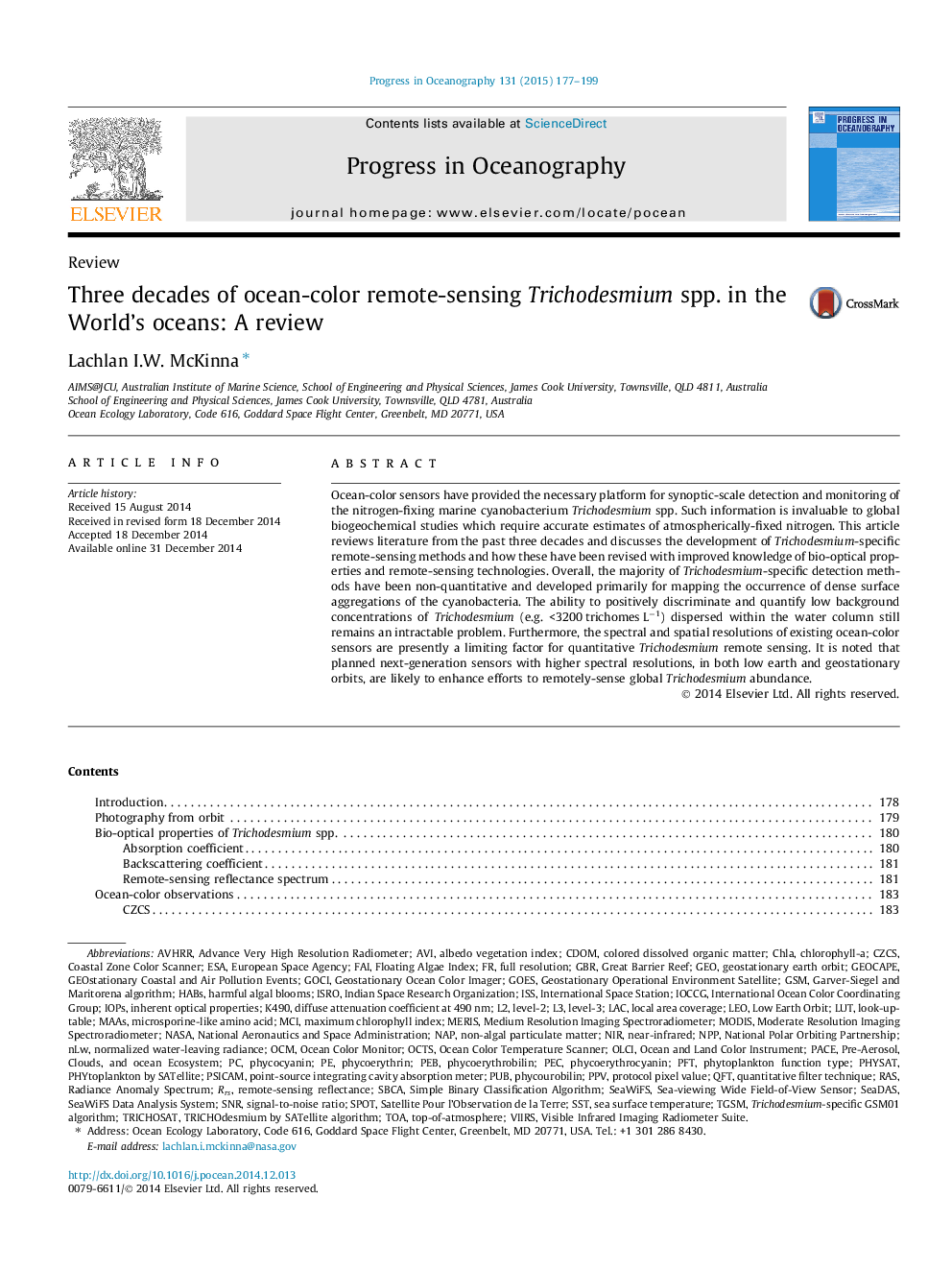| Article ID | Journal | Published Year | Pages | File Type |
|---|---|---|---|---|
| 6388513 | Progress in Oceanography | 2015 | 23 Pages |
â¢Most historical approaches have focused on mapping dense surface blooms of Trichodesmium.â¢Advanced spectral algorithms have a detectability limit: 3500-5000 trichomes Lâ1.â¢Trichodesmium bloom signals are degraded when using binned level-3 data.â¢Spectral bands in the range 550-650 nm are required to detect phycobilipigments.â¢Geostationary sensors may capture diel variability in Trichodesmium abundance.
Ocean-color sensors have provided the necessary platform for synoptic-scale detection and monitoring of the nitrogen-fixing marine cyanobacterium Trichodesmium spp. Such information is invaluable to global biogeochemical studies which require accurate estimates of atmospherically-fixed nitrogen. This article reviews literature from the past three decades and discusses the development of Trichodesmium-specific remote-sensing methods and how these have been revised with improved knowledge of bio-optical properties and remote-sensing technologies. Overall, the majority of Trichodesmium-specific detection methods have been non-quantitative and developed primarily for mapping the occurrence of dense surface aggregations of the cyanobacteria. The ability to positively discriminate and quantify low background concentrations of Trichodesmium (e.g. <3200 trichomes Lâ1) dispersed within the water column still remains an intractable problem. Furthermore, the spectral and spatial resolutions of existing ocean-color sensors are presently a limiting factor for quantitative Trichodesmium remote sensing. It is noted that planned next-generation sensors with higher spectral resolutions, in both low earth and geostationary orbits, are likely to enhance efforts to remotely-sense global Trichodesmium abundance.
Graphical abstractDownload full-size image
